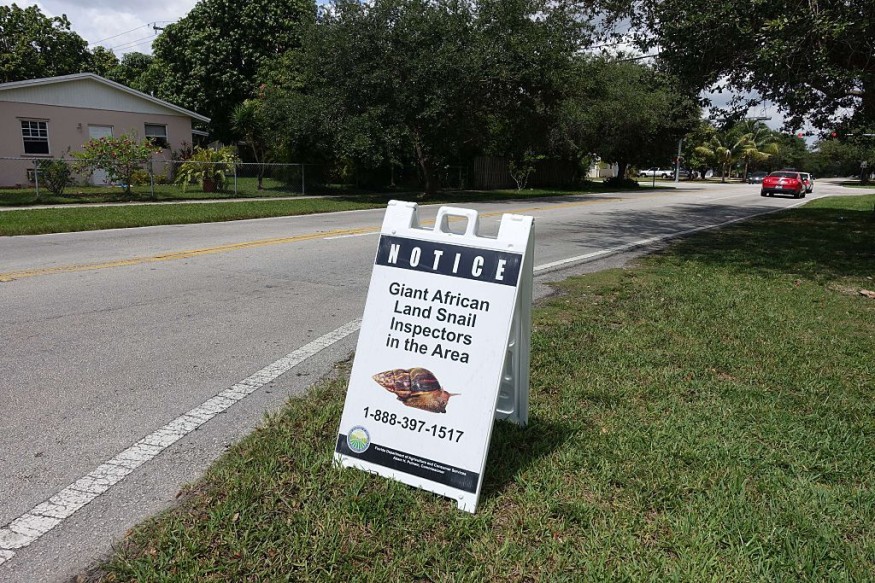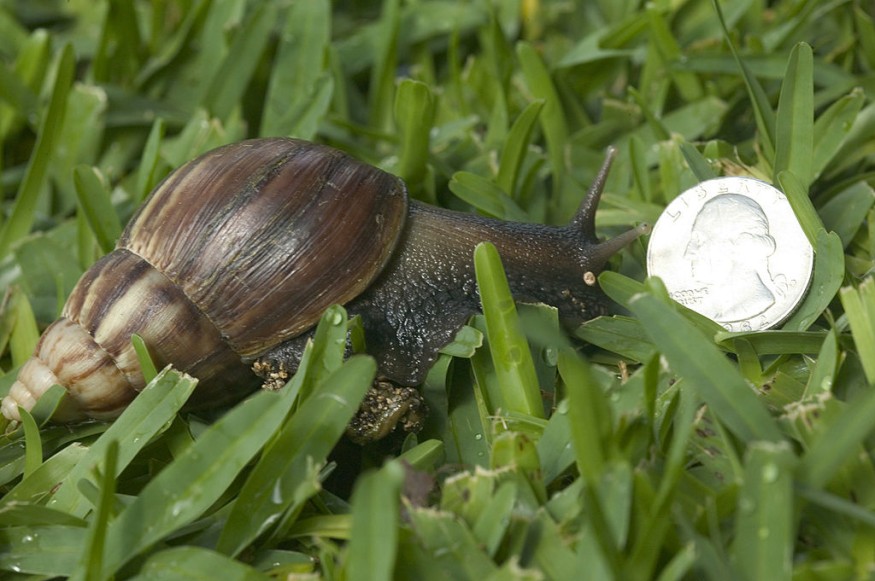
As a result of recent reports of invasive giant African land snail sightings in Florida, three counties have been put under quarantine.
Florida Quarantine Zones
One of the gigantic gastropods was discovered earlier this month in Broward County, which is located just north of Miami. On Monday, state officials declared a 5-square-mile quarantine zone in Broward to attempt and stop the mollusks' spread. Transporting snails, dirt, plants, compost, or building materials is currently prohibited by the quarantine unless prior permission has been granted by the Florida Department of Agriculture and Consumer Services FDACS.
Along with the two others that have already been designated throughout the state-one in Lee County and one in Pasco County-a new quarantine area has been formed.
Florida officials are aiming to completely eliminate the snails in each of these three areas rather than just containing them. The state agriculture department is trying to eliminate the exploding populations of snails by applying the poisonous pesticide metaldehyde, which interferes with the creation of snail slime before the invasive species eat everything else.
Invasive Giant African Land Snail Problem
Huge African land snails are reported to eat more than 500 different kinds of plants, including significant crops including beans, cucumbers, peas, and even melons. According to the US Department of Agriculture, if their favorite food sources aren't available, the snails will fall back to eating nearly every other thing they can get to, including decorative plants, native flora, tree bark, and even the paint and stucco on structures.
The East African continent is home to the fist-sized mollusks, where they are reportedly a delicacy. However, they pose a serious threat to Florida's agricultural sector and the state's ecosystem.
Often, the enormous gastropods leave behind more than just slime trails because the species is home to a parasite known as rat lungworm, which can infect people and lead to meningitis. A person may become ill after consuming a snail infected with rat lungworm or unwashed vegetables tainted with the mucus of an infected snail.

Although many slug and snail species can spread the parasite, gigantic African land snails can be especially troublesome due to their rapid reproduction, absence of natural predators in the state of Florida, and preference for crop plants. According to FDACS, they are one of the worst invasive pests on the earth.
A single snail can lay thousands of eggs annually asexually. By taking rides on cars or in-yard garbage that is being hauled, they can cover large distances at once. When conditions aren't optimal, they can go into stasis and remain underground for up to a year before things become better. Therefore, getting rid of them is an uphill battle but one that Florida has overcome in the past.
Previous Eradication Measures
The state has already dealt with two instances of large African land snails. In Miami's downtown, the species was initially brought to Florida in 1966. By destroying the creatures and their eggs through a $1 million operation, the pests were declared extinct by 1975.
But then the snail was reintroduced in September 2011. According to the USDA, it took another ten years and more than $23 million to rid the area of the snails this time. The species was once more eliminated in 2021.
According to government authorities, the gigantic snail population found in Pasco County in 2022 is not related genetically to the ones that were eliminated from Miami-Dade County the previous year before. The snails in Broward and Lee counties may also be genetically unique.
Also Read : 8,000 Critically Endangered Hawaiian Snails Relocated From Kailua to Pearl City in Hawaii
Introduction to Florida Ecosystem
There are a few possibilities, even if it's not entirely clear where these recently discovered gastropods first appeared.
The USDA speculates that the snails may have been released pet specimens even though keeping giant African land snails as terrarium pets is against the law.
It's also possible that the animals were brought here specifically to be eaten.
The US Customs and Border Protection have previously taken them into custody. At the Detroit airport, authorities recently found six live snails in a suitcase. Alternately, like many invasive species, the newly discovered pests in Florida may have entered the state by accidentally being transported as eggs on imported plant material.
The creatures have been widely introduced throughout the world and may be found in India, China, Southeast Asia, and some regions of South America.
Another possibility is that the previous eradication efforts in Florida may not have been as successful as initially thought, Gizmodo reports.
Related Article : Tiny NZ Mudsnails Infest Tonto Creek in Arizona, Officials Close Area for Biosecurity Protocols
© 2026 NatureWorldNews.com All rights reserved. Do not reproduce without permission.





